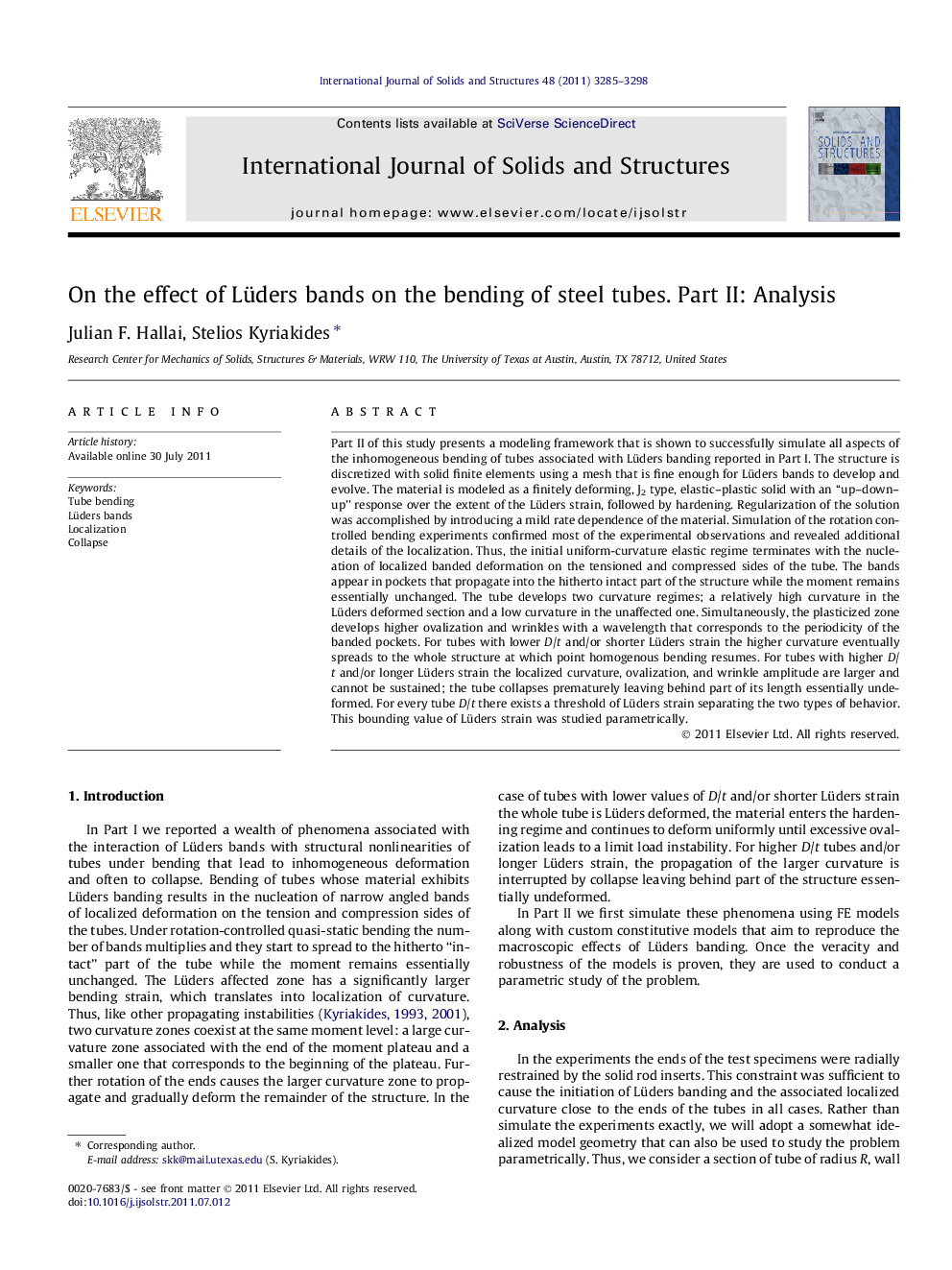| Article ID | Journal | Published Year | Pages | File Type |
|---|---|---|---|---|
| 278479 | International Journal of Solids and Structures | 2011 | 14 Pages |
Part II of this study presents a modeling framework that is shown to successfully simulate all aspects of the inhomogeneous bending of tubes associated with Lüders banding reported in Part I. The structure is discretized with solid finite elements using a mesh that is fine enough for Lüders bands to develop and evolve. The material is modeled as a finitely deforming, J2 type, elastic–plastic solid with an “up–down–up” response over the extent of the Lüders strain, followed by hardening. Regularization of the solution was accomplished by introducing a mild rate dependence of the material. Simulation of the rotation controlled bending experiments confirmed most of the experimental observations and revealed additional details of the localization. Thus, the initial uniform-curvature elastic regime terminates with the nucleation of localized banded deformation on the tensioned and compressed sides of the tube. The bands appear in pockets that propagate into the hitherto intact part of the structure while the moment remains essentially unchanged. The tube develops two curvature regimes; a relatively high curvature in the Lüders deformed section and a low curvature in the unaffected one. Simultaneously, the plasticized zone develops higher ovalization and wrinkles with a wavelength that corresponds to the periodicity of the banded pockets. For tubes with lower D/t and/or shorter Lüders strain the higher curvature eventually spreads to the whole structure at which point homogenous bending resumes. For tubes with higher D/t and/or longer Lüders strain the localized curvature, ovalization, and wrinkle amplitude are larger and cannot be sustained; the tube collapses prematurely leaving behind part of its length essentially undeformed. For every tube D/t there exists a threshold of Lüders strain separating the two types of behavior. This bounding value of Lüders strain was studied parametrically.
